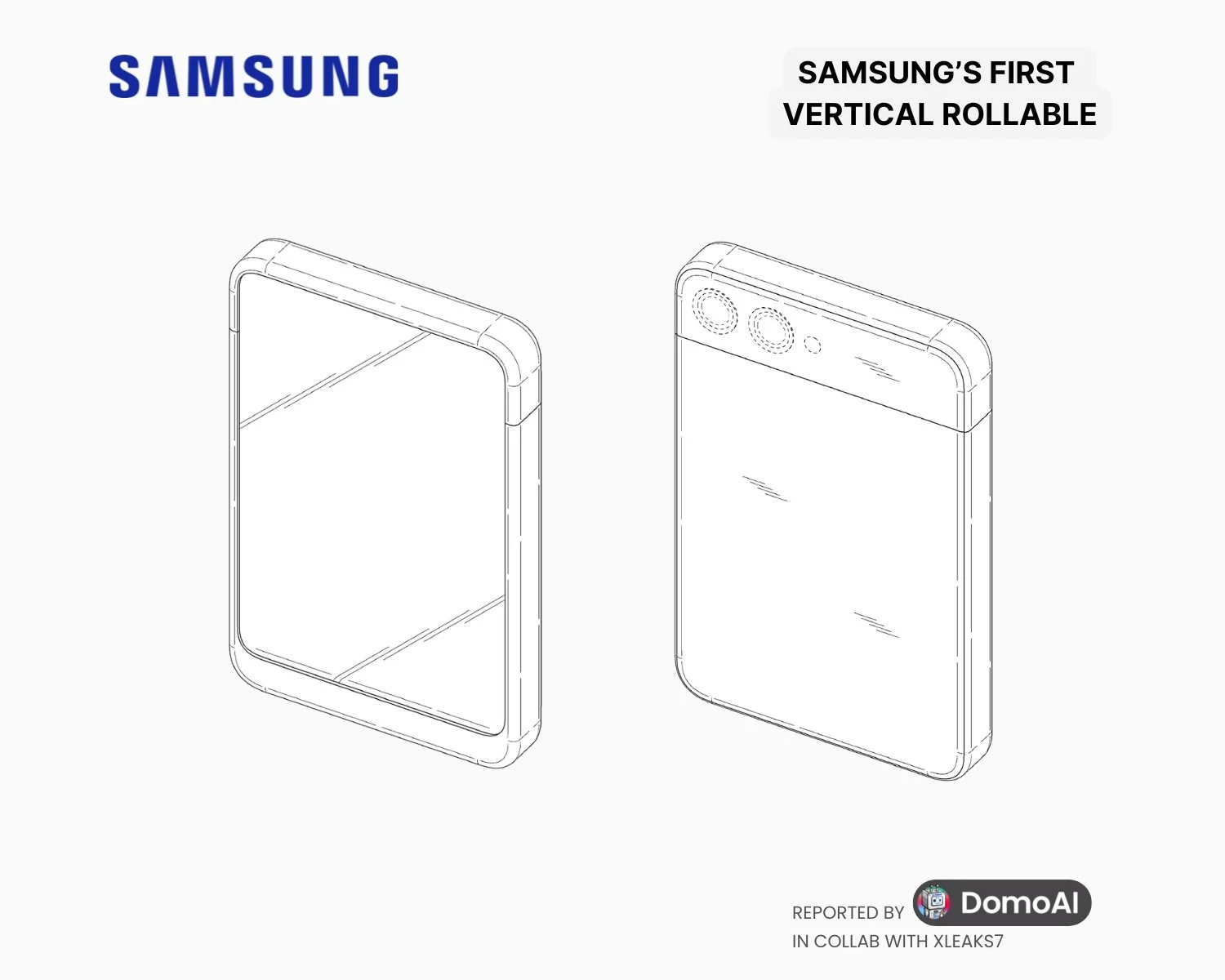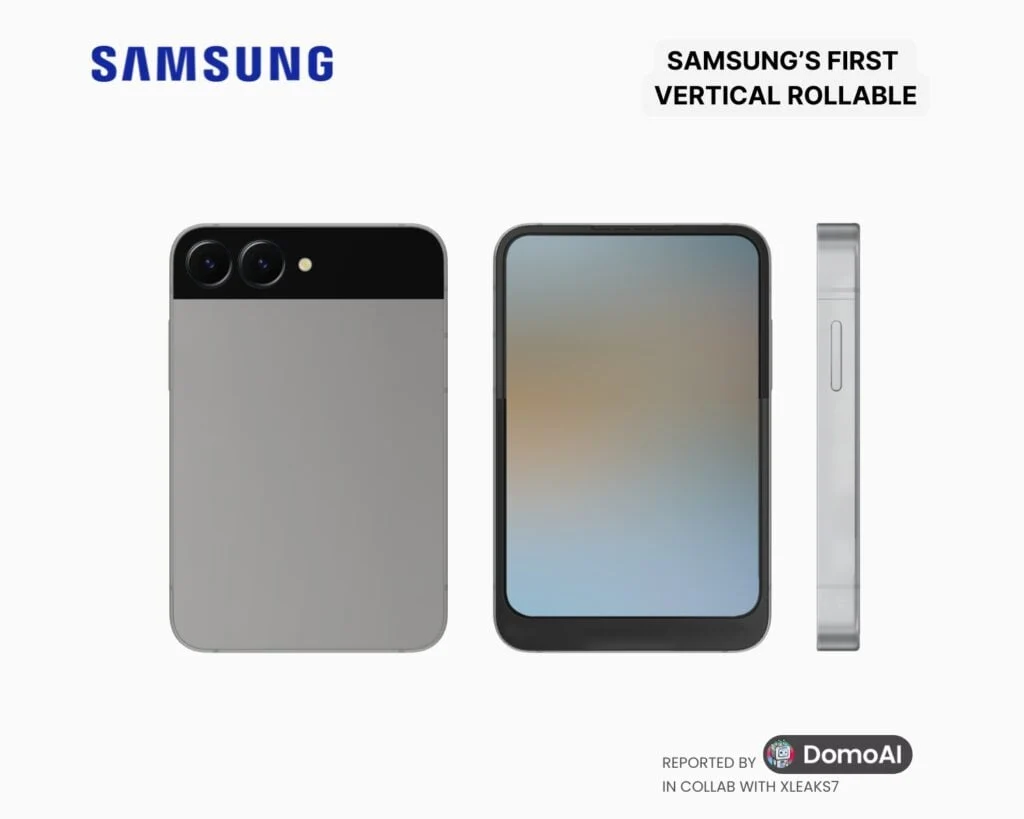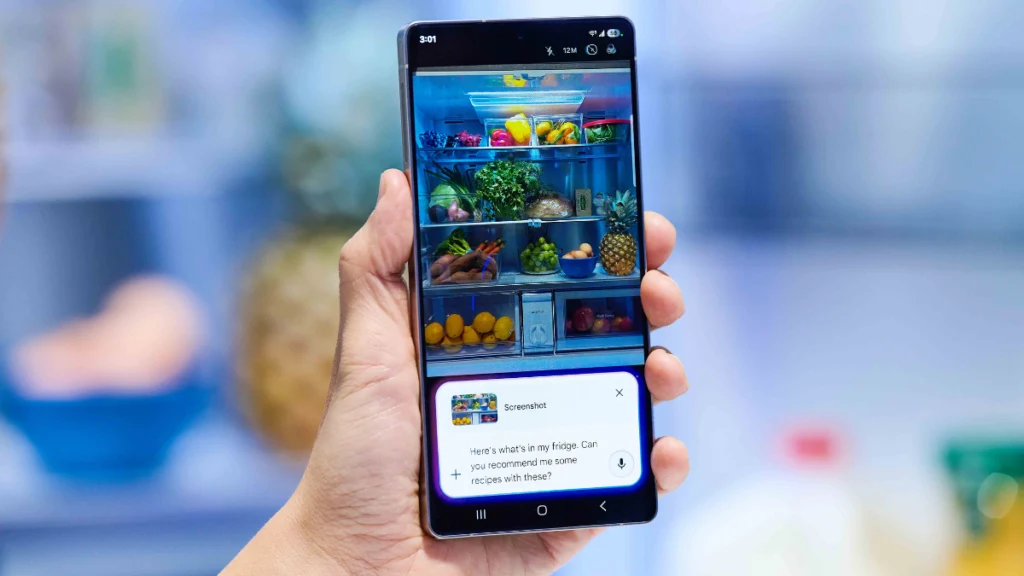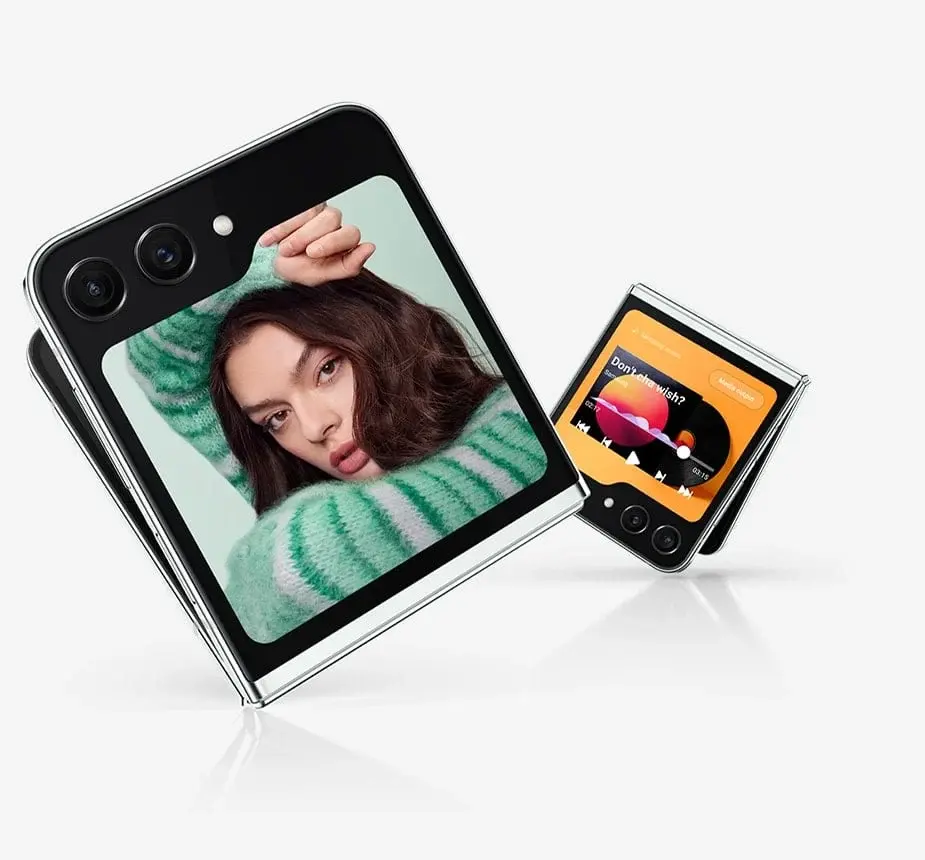Key Takeaways
1. Samsung is developing a vertical rollable smartphone, marking a shift in mobile design.
2. The vertical design allows for a compact size while providing a taller, immersive screen when needed.
3. On-device AI may enhance user interaction, enabling features like real-time translation and content summarization.
4. The adaptable display could improve daily tasks, making activities like reading and photo editing more intuitive.
5. Samsung is also exploring other designs, including a foldable phone with a 360-degree hinge and ultra-thin flexible glass.
Samsung is once again pushing the boundaries of mobile design, this time with a vertical twist. A recent patent, discovered by DomoAI and shared by David from @xleaks7, showcases sketches that could introduce Samsung’s very first vertical rollable smartphone. This innovative concept suggests a bold shift in user interaction with devices.
Unique Vertical Design
Unlike previous rollable models that expand sideways, Samsung’s design features a display that grows vertically. This means the device can stay compact in your pocket while providing a taller, immersive screen when needed. The sketches indicate that the front panel has slim bezels and a slightly pronounced chin, with the body appearing thicker to accommodate the rolling mechanism. On the back, the camera configuration resembles the dual-lens setup found on the Galaxy Z Flip 6.
Functionality and Features
The patent doesn’t show the device in its fully extended form, leaving the maximum screen size uncertain. However, this design hints at smoother transitions between casual use and more intensive tasks like productivity or entertainment. It could represent a new hybrid that combines the characteristics of a regular phone and a media device.
DomoAI notes that Samsung might implement on-device AI to improve user interaction with the rollable smartphone. What makes this concept unique is not just the AI integration but also how these features could utilize the flexible screen space. For instance, real-time translation could present two languages at the same time in a split view, expanding the screen vertically to accommodate both. Achieving such a layout on a traditional phone could be challenging without feeling cramped.
Enhancing Daily Tasks
The system could also streamline daily activities by merging AI capabilities with the adaptable display. Imagine reading a lengthy message or article; the AI could summarize the content while the screen expands to show more, reducing the need for constant scrolling. Photo editing might become more intuitive as well. Instead of making minor adjustments on a small screen, the phone could unroll slightly to offer a larger, more comfortable view, making it easier to eliminate distractions or adjust lighting accurately.
This concept stands out as it doesn’t just rely on the novelty of a rollable screen. If executed well, it could transform rollables from a gimmick into a meaningful upgrade. The vertical expansion appears more suited to how we scroll, read, or multitask, and combining that with intelligent software could open new avenues for productivity and entertainment.
While nothing has been confirmed yet, and we’ve only seen patent sketches as of now, this vertical rollable smartphone suggests a future where hardware adaptability might change how we engage with our devices.
Other Potential Designs
Additionally, this isn’t the sole design Samsung could be working on. A newly approved US patent indicates the company is also looking into a foldable phone equipped with a 360-degree hinge that bends both inward and outward, potentially eliminating the need for a separate cover screen. This design incorporates ultra-thin flexible glass and a small rear display strip for notifications when the device is closed.
Source:
Link













